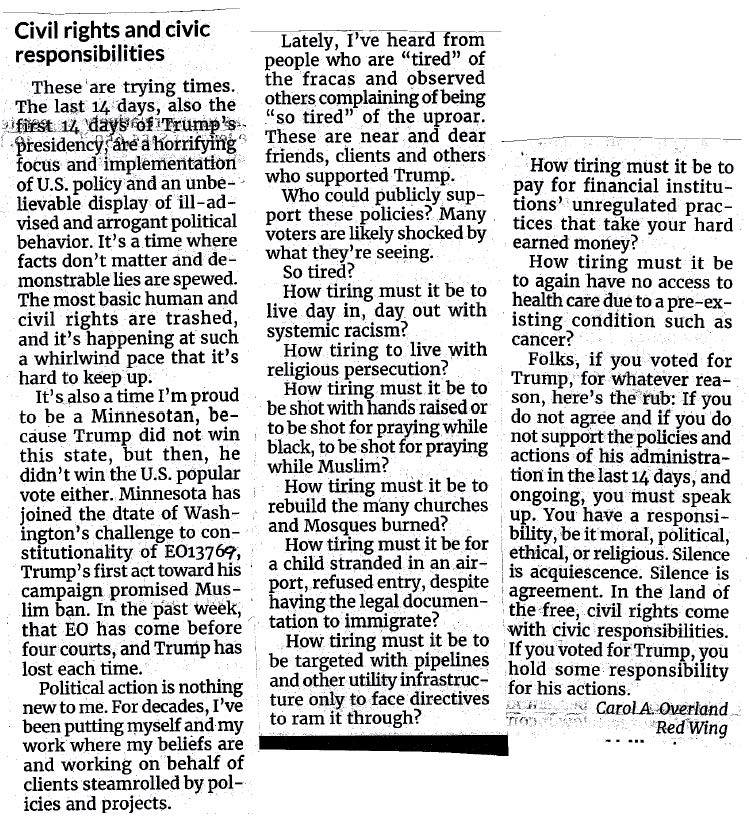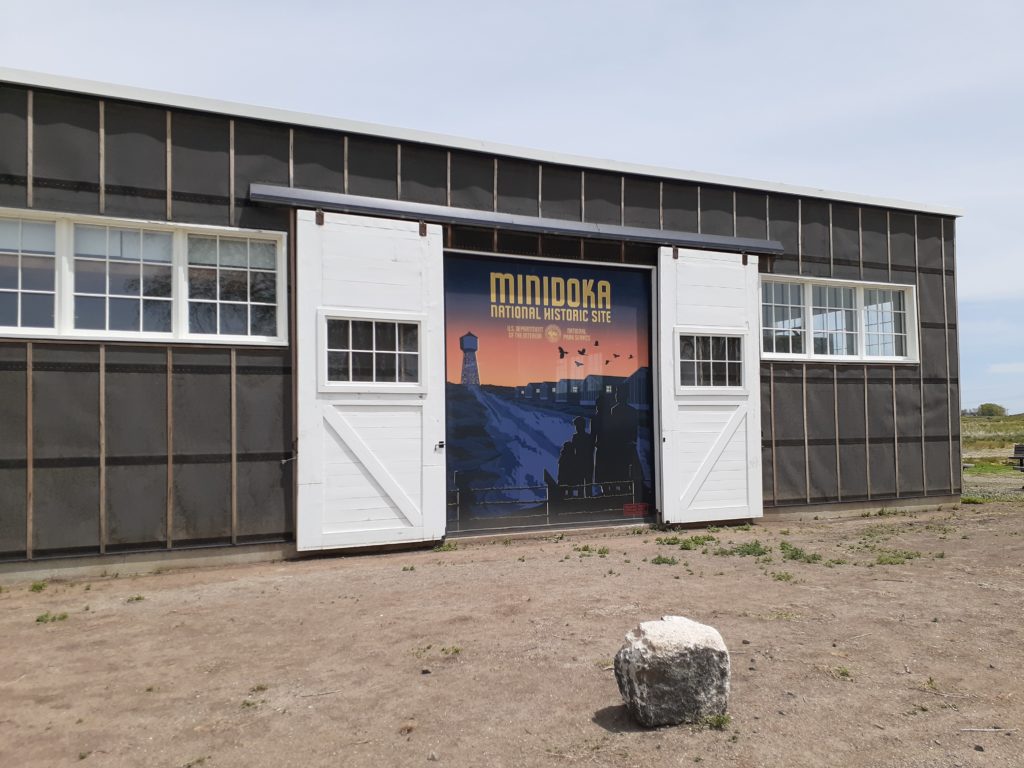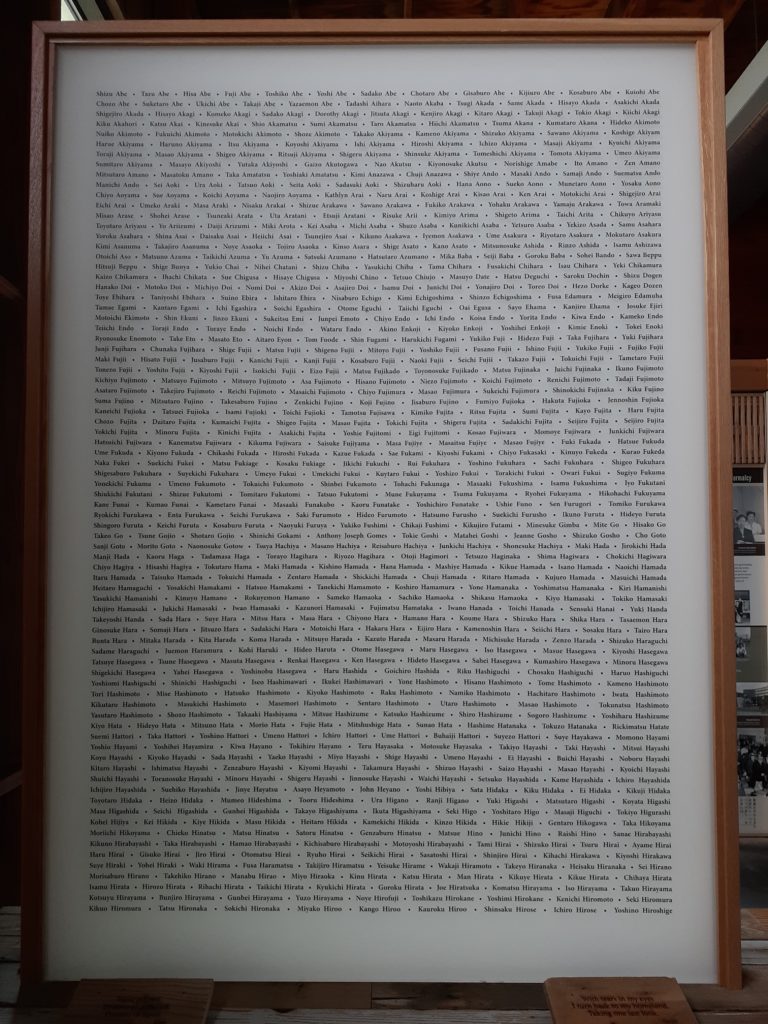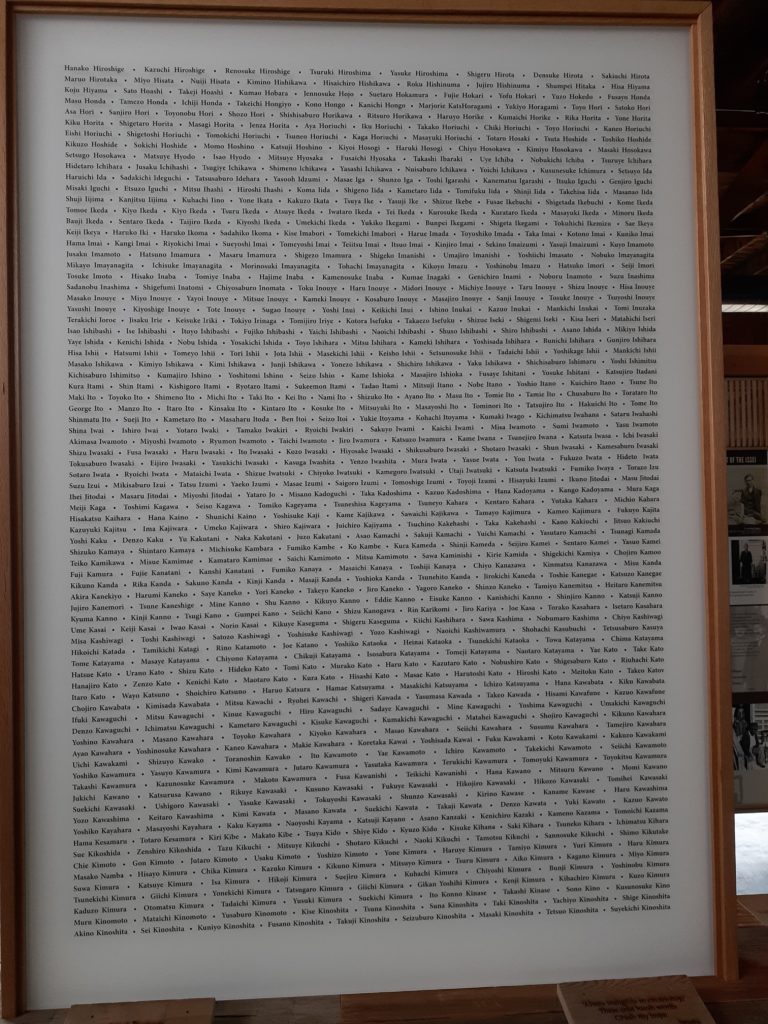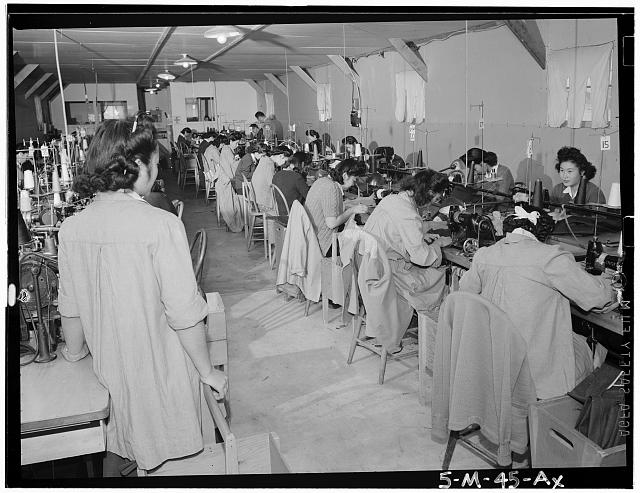A MUST visit — Minidoka National Historic Site
June 1st, 2022
When we left Craters of the Moon Nat’l Monument and Preserve, we learned Minidoka National Historic Site was on the way out of Idaho, so of course we headed to Jerome, Idaho. It’s a memorial documenting the U.S. internment of Japanese citizens and issei (first generation Japanese immigrants who the “U.S.” determined were unable to become citizens). When we toured Manzanar in 2017, which needs to be on everyone’s go-to list, I got a copy “By Order of the President: FDR and the Internment of Japanese Americans,” written by Greg Robinson, focused on Executive Order 9066 and rounding up of Japanese without due process, without notice, where families lost everything, EVERYTHING, and were in these concentration camps for years, in some cases, having to build the camps, as they were in remote locations, and nothing was there!

It’s really disturbing that this IS how we treat people in this country. It’s doubly disturbing when we see familiar names on the list, in this case, the Issei Memorial of those imprisoned at Minnedoka:
These are lessons we need to know, and never repeat. Yet back in 2017, when we toured Manzanar National Historical Site, the then “President” was issuing hateful and discriminatory Muslim ban Executive Orders, starting with EO13769, to prevent entry to the U.S. Deja vu all over again.
The Minidoka National Historic Site is quite new, and it looks like it’s under development, more to come. There’s a strong tie with this location to the Bainbridge Island round-up, where Japanese first were sent to Manzanar, and then to Minidoka. There’s more info on Bainbridge Island that HERE (though this site is odd, the wording/language used is a little to “happy.” From the site, “children and adults alike will enjoy this delightful local museum” ummmmm, there’s nothing delightful about forced “evacuation” and incarceration.)
Manzanar – Information on Japanese American Internment
February 27th, 2017

Internment of Japanese Americans was all too real, and it’s a shameful part of American history that we all should know more about. Yeah, I’ve been posting a lot about this, the intentional and orchestrated buildup of hate and racism leading to Executive Order 9066. I knew about it before I went, but actually being there, it hit home in a profound way that isn’t captured by words, particularly when we’re seeing a similar intentional and orchestrated buildup of hate and racism today.
Manzanar National Historical Site
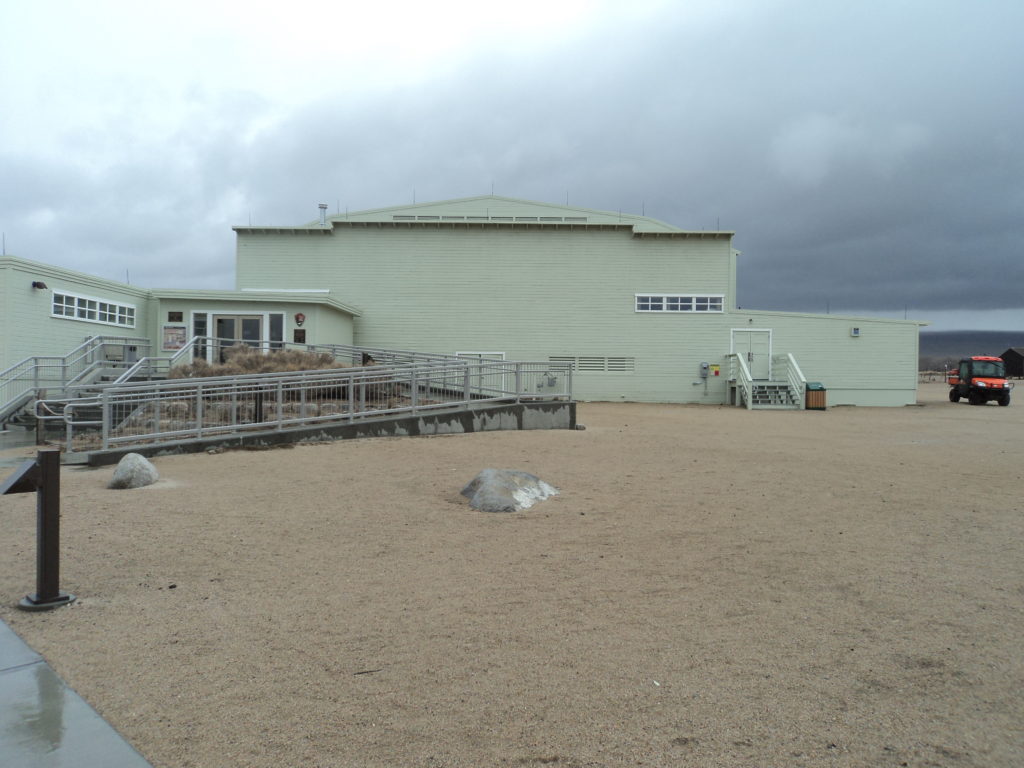
This is the original large hall build by prisoners. It became the focal point of the camp, a gathering spot, even a theater and dance hall — attempts to have some semblance of “normal” life, though captive.
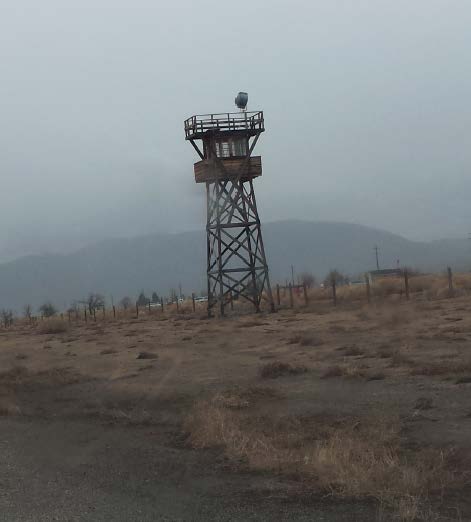
How to research family specifics? Here’s a page from the National Park Service on how to research families held in internment camps across the US:
The arguments for internment were not rational, and evidence presented to Pres. Roosevelt in reports he requested to assess threat to US of Japanese Americans found uniformly that there was no threat. Those reports of “no threat” were turned around with this statement below, turned around, much like today where the recent terroristic events were NOT from the 7 countries of tRump’s Muslim Ban:
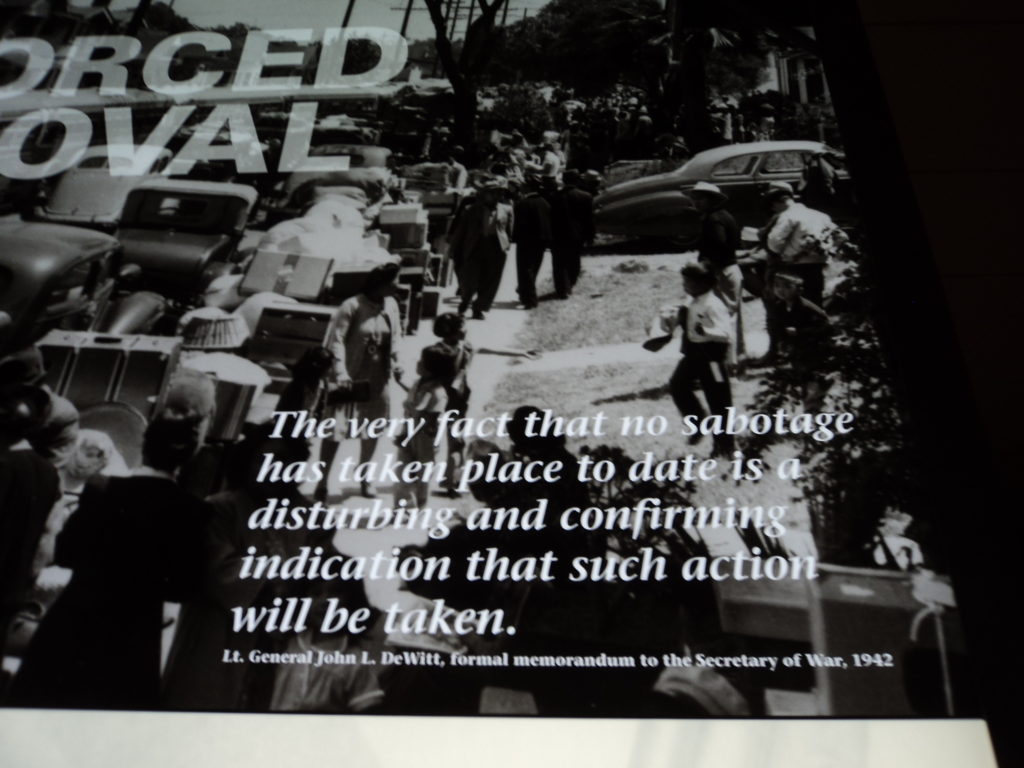
Really… “The very fact that no sabotage has taken place to date is a disturbing and confirming indication that such action will be taken.” WHAT?!?!?!
On a large wall, from the high ceiling to the floor, there’s a long, long list of families interred, a graphic image of the broad impact, looking up to the top is dizzying:
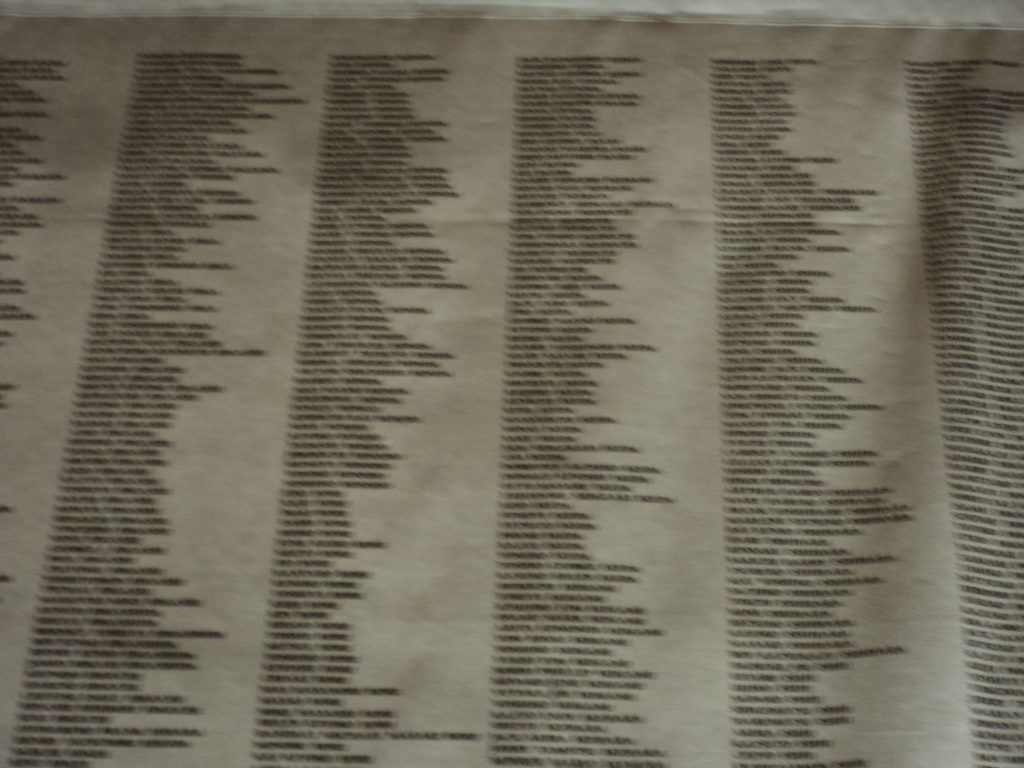
And notebooks listing the families, information about them, and where they went when they left:

There’s a oral history project ongoing, and the National Park Service is collecting this history through interviews, sharing documents, family items, to convey the experience of internment and preserve it to help us learn about our country. Here’s a booklet with information on participating in this project:
It took over 40 years for the U.S. to admit this grievous wrong, apologize and offer modest reparations. An NPR report:
From Wrong To Right: A U.S. Apology For Japanese Internment
Now, rather than do this all over again, rather than be wrong, wrong, wrong, let’s just get it right from the start and rescind the Muslim ban (Executive Order 13769).
75 years ago – America’s Shameful Japanese Internment
February 18th, 2017
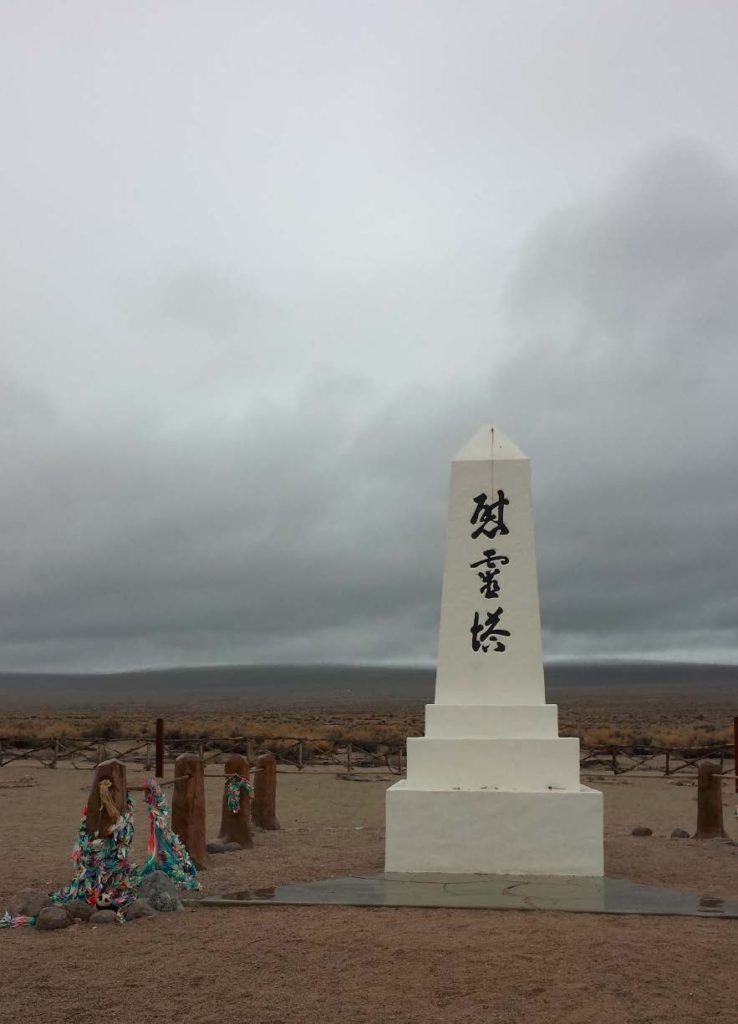 Photo of Memorial taken yesterday at Manzanar — eerily similar to Wounded Knee
Photo of Memorial taken yesterday at Manzanar — eerily similar to Wounded Knee
America’s internment of Japanese Americans… It began with an Executive Order, after some groundwork was laid. Does this sound familiar?
Yesterday, Alan Muller and I visited the Manzanar National Historic Site. Every American should be required to spend a day there and learn of our treatment of Japanese Americans during WWII.

Manzanar, near Independence, California (really, “Independence”). It’s the site of one of the ten Japanese internment camps, and yes, it was a prison camp. Guard towers, armed guards keeping people inside the camp. People who were rounded up and “evacuated” from their homes, their businesses, their communities, and put behind barbed wire.

How did this happen the United States of America? Look around, right now, at what is happening and you’ll see that we’re on the path to repeat this ugly history.
On February 19, 1942, President Franklin Roosevelt signed Executive Order 9066, the order directing capture, rounding up, and internment of Japanese Americans during World War II. It’s fairly short, with a misleading heading, and far-reaching impacts:
Executive Order 9066 February 19, 1942
Authorizing the Secretary of War to Prescribe Military Areas
Whereas the successful prosecution of the war requires every possible protection against espionage and against sabotage to national-defense material, national-defense premises, and national-defense utilities as defined in Section 4, Act of April 20, 1918, 40 Stat. 533, as amended by the Act of November 30, 1940, 54 Stat. 1220, and the Act of August 21, 1941, 55 Stat. 655 (U.S.C., Title 50, Sec. 104);
Now, therefore, by virtue of the authority vested in me as President of the United States, and Commander in Chief of the Army and Navy, I hereby authorize and direct the Secretary of War, and the Military Commanders whom he may from time to time designate, whenever he or any designated Commander deems such action necessary or desirable, to prescribe military areas in such places and of such extent as he or the appropriate Military Commander may determine, from which any or all persons may be excluded, and with respect to which, the right of any person to enter, remain in, or leave shall be subject to whatever restrictions the Secretary of War or the appropriate Military Commander may impose in his discretion. The Secretary of War is hereby authorized to provide for residents of any such area who are excluded therefrom, such transportation, food, shelter, and other accommodations as may be necessary, in the judgment of the Secretary of War or the said Military Commander, and until other arrangements are made, to accomplish the purpose of this order. The designation of military areas in any region or locality shall supersede designations of prohibited and restricted areas by the Attorney General under the Proclamations of December 7 and 8, 1941, and shall supersede the responsibility and authority of the Attorney General under the said Proclamations in respect of such prohibited and restricted areas.
I hereby further authorize and direct the Secretary of War and the said Military Commanders to take such other steps as he or the appropriate Military Commander may deem advisable to enforce compliance with the restrictions applicable to each Military area hereinabove authorized to be designated, including the use of Federal troops and other Federal Agencies, with authority to accept assistance of state and local agencies.
I hereby further authorize and direct all Executive Departments, independent establishments and other Federal Agencies, to assist the Secretary of War or the said Military Commanders in carrying out this Executive Order, including the furnishing of medical aid, hospitalization, food, clothing, transportation, use of land, shelter, and other supplies, equipment, utilities, facilities, and services.
This order shall not be construed as modifying or limiting in any way the authority heretofore granted under Executive Order No. 8972, dated December 12, 1941, nor shall it be construed as limiting or modifying the duty and responsibility of the Federal Bureau of Investigation, with respect to the investigation of alleged acts of sabotage or the duty and responsibility of the Attorney General and the Department of Justice under the Proclamations of December 7 and 8, 1941, prescribing regulations for the conduct and control of alien enemies, except as such duty and responsibility is superseded by the designation of military areas hereunder.
Franklin D. Roosevelt
The White House,
February 19, 1942.
These are the areas picked for “from which any or all persons may be excluded, and with respect to which, the right of any person to enter, remain in, or leave shall be subject to whatever restrictions the Secretary of War or the appropriate Military Commander may impose in his discretion.”

The striped areas including all of California, and parts of Washington, Oregon and Arizona were deemed Over 100,000 Japanese Americans were torn out of their homes, picked up, and put in “internment” camps, concentration camps by another name. The states on the west coast were declared “military areas” of exclusion. Though the word “Japanese” was not stated in the Executive Order, it built on racism and fear racheted up by the government in years prior, pushed by hatred of powerful and wealthy ones who stood to gain from internment, and who stood to gain from the resources Japanese Americans were forced to leave behind. With little notice, and no due process, Japanese Americans were rounded up, put on trains, trucks, or took their own vehicles to the assembly areas, staging for shipment to the internment camps like so much cattle. The photos and films of this process are disturbing, much like Holocaust scenes of people shoved into the backs of trucks, peering out through gates; of trains tightly packed with children waving, even holding American flags; of people standing in line with whatever possessions they could carry; of so many with expressions of horror, fear, anguish, and anxiety.
Life in the camps was hard. Camps were isolated in rugged and unforgiving terrain. Make no mistake about it, they were prison camps, with guard towers and barbed wire — no one could go out, until later when some were allowed to move east, if they were able to demonstrate that they had a job, a home, and that they would not be a burden on society. On arrival at the camps, they were assigned barracks, grouped by families or just put into a room with strangers, with nothing other than what little they could carry on their journey, and were given a straw mattress. Showers and toilets were primtive with no privacy. There was a network of mess halls for meals and prisoners did the cooking, making do with what resources they had, farming, raising poultry and livestock, with Over time, people made minimalist furniture, sewed clothes, established a hospital, newspaper, gardens, cemetary, and a camp system of government. There were jobs for prisoners, from cooking, to sewing camouflage nets, to construction at the camp. There were schools for children and adults, a choir, sports, but it was not fun and games. They could not leave, and knew they had lost everything when they were forced to leave.
During internment, prisoners were presented with a loyalty oath, which was problematic, because they were imprisoned, their human and civil rights were disregarded, yet they were asked to declare loyalty to America, the same America that had stolen their lives and possessions and imprisoned them! At that time they were not allowed to become citizens, and yet if from Japan they were asked to renounce their Japanese citizenship, and would then be without a country.
If you dig into the archives, you’ll also see photos and films of people dressed in finery, as if going on vacation — I’d guess these were the government propaganda photos, or films like this:
From that film, at 24:40:
We’re setting a standard for the rest of the world in the treatment of people who may have loyalty to an enemy nation. We are protecting ourselves without violating the principles of Christian decency.
Oh, right, this is an example of Christian principles?
Dorthea Lange – Inside a Barrack:

Dorthea Lange – Grandfather and Grandson:

Here’s a collection by Ansel Adams from the Library of Congress (Rights Advisory: No known restrictions on publication) showing day to day life in the Manzanar camp:
Ansel Adams’s Photographs of Japanese-American Internment at Manzanar
From that collection, “Sumiko Shigematsu, foreman of power sewing machine girls, Manzanar Relocation Center, California”
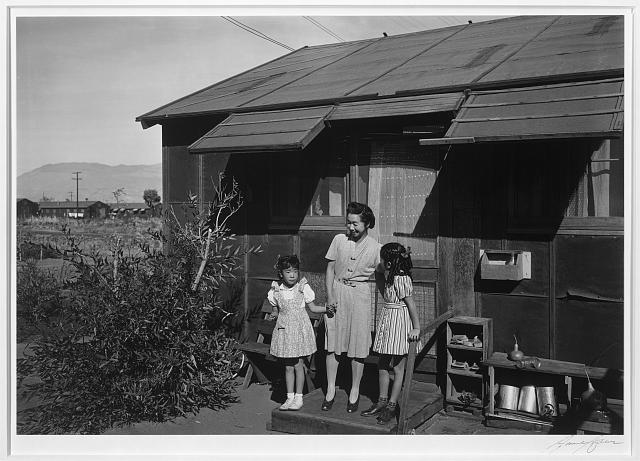
Remember that this internment of Japanese Americans began with an Executive Order? Well, I’ve been tracking the tRump Executive Orders, and in particular the Muslim Ban of EO 13769 and the many court cases challenging it on behalf of particular plaintiffs, affected by the Executive Order, and most importantly, the Constitutional challenges of the states of Washington and Minnesota.
EO13769 -Protecting the Nation From Foreign Terrorist Entry Into the United States
This is how it starts, openly blatantly campaigning on a Muslim Ban, and don’t forget his statements at the airport hangar in Minneapolis:

It’s up to us to make sure this does not happen again.
Some previous Legalectric posts:
Yesterday, I picked up a copy of “By Order of the President: FDR and the Internment of Japanese Americans,” written by Greg Robinson.
 A review blurb on the back says it well, why we need to pay close attention NOW (more on this after I have some time to ruminate and digest):
A review blurb on the back says it well, why we need to pay close attention NOW (more on this after I have some time to ruminate and digest):
Robinson’s book reminds us that panicky acts in a national crisis that sacrifice rights for which we claim to fight emerge not just from immediate insecurity but from deeper prejudices and fears…
Executive Orders… that’s how we got EO13769. tRump’s EOs have been weird. After making “Obama’s illegal Executive Orders” a campaign meme, he fires off messy, illogical, and yes, illegal ones of his own, and like Obama, it’s not just Executive Orders, it’s multiple Memoranda. You can find them on the White House Presidential Actions page and at the Federal Register – Agencies – Executive Office of the President. It wasn’t easy. It took days for Executive Orders and Memoranda to show up, and so it was impossible to know exactly what he was doing, but then, it looks like he didn’t know what he was doing either. For example, I was concerned about his Dakota Access Pipeline action, Trump_Memorandum Dakota Access (note it is NOT an Executive Order). In checking that out, I found an error (and fired off a missive to the White House Contact Page)! You can see both versions here, they’ve filed a corrected one.
More importantly, this also happened with the Muslim Ban, EO13769, which I went over with a fine tooth comb because I don’t know much about immigration law. The EO in Sec. 8 cites 8 U.S.C. 1222 which is about a physical examination, so I’d also sent a demand for correction to the White House. It’s still wrong, LOOK AT SEC. 8, it’s not been corrected!!! The Federal Register publication of EO13769 is correct.
Thankfully I wasn’t the only one looking. Turns out there was a lot more than that, the versions published on the White House Presidential Actions page were not the same as those signed and sent for publication in the Federal Register. WHAT?!?!
WH posts wrong versions of Trump orders
White House posts wrong versions of Trump’s orders on its website
That there’s been insufficient thought and vetting of these Orders and Memoranda is obvious. You’d think that where an Executive Order such as EO13769 takes such sweeping steps to exclude a classification of people from the US that they’d give best efforts toward accuracy.
Substantively, the Muslim Ban that is EO13769 is not about national security, that much is clear from the government’s arguments, more correctly the government’s lack of any evidence that it was about national security, and Washington’s evidence, as above, from tRump’s campaign website that the purpose was to prevent Muslim immigration.
Japanese internment. Muslim ban. Think it can’t happen here, again? It’s been slowed, but EO13769 has not yet been revoked, and the anti-Muslim sentiments remain displayed on tRump’s campaign site.
NEVER AGAIN!
BE VIGILANT!
SPEAK UP!
TO DO: FIVE ACTIONS A DAY
It doesn’t take much to make a difference — and each of us must do what we can do. We each have different unique skills and abilities which America needs right now.
